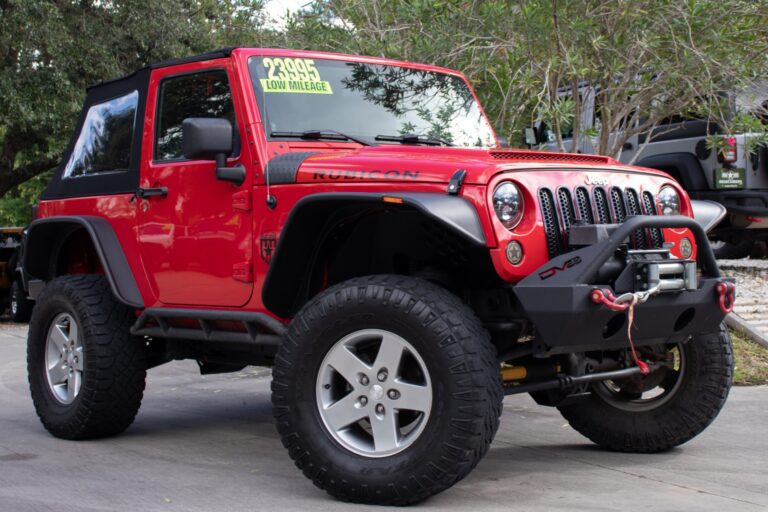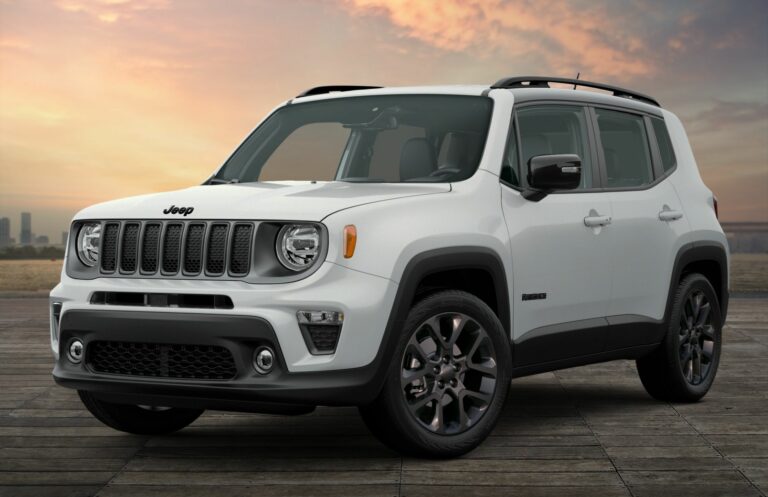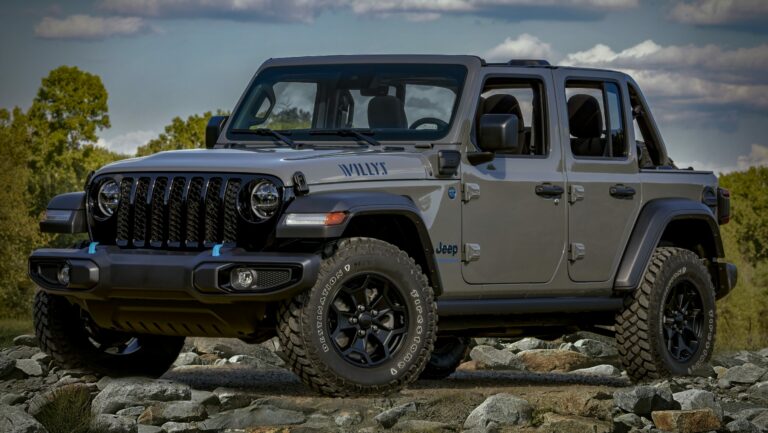97 Jeep Cherokee: The Unsung Hero of the XJ Generation
97 Jeep Cherokee: The Unsung Hero of the XJ Generation jeeps.truckstrend.com
The year 1997 holds a special place in the hearts of Jeep enthusiasts, particularly those who revere the iconic Cherokee XJ. Far from being just another model year, the 1997 Jeep Cherokee represents a pivotal moment in the XJ’s production run, incorporating significant refinements that enhanced its appeal while retaining the rugged simplicity and legendary capability that defined the series. It’s a vehicle that perfectly blends classic utility with modern comfort updates, making it a highly sought-after model for off-road adventurers, DIY mechanics, and those simply seeking a reliable, no-nonsense SUV that stands apart from today’s more refined crossovers. The ’97 XJ isn’t just a car; it’s a testament to enduring design and engineering, a practical workhorse, and a beloved classic that continues to prove its worth decades after rolling off the assembly line.
The XJ Legacy: Why 1997 Matters
97 Jeep Cherokee: The Unsung Hero of the XJ Generation
The Jeep Cherokee (XJ) was revolutionary when it debuted in 1984, effectively creating the compact SUV segment. Its unibody construction, a departure from traditional body-on-frame SUVs, offered a lighter, more car-like ride without sacrificing off-road prowess. By 1997, the XJ had been in production for over a decade, and while its core design remained robust, Jeep decided it was time for a significant refresh. This refresh was crucial because it modernized the interior and exterior without fundamentally altering the XJ’s beloved mechanicals or rugged character.
The 1997 model year brought a redesigned dashboard, vastly improved ergonomics, new door panels, and a more user-friendly center console. On the exterior, updated bumpers, revised body cladding, and new taillights gave it a fresher look. Crucially, 1997 also saw the introduction of a full steel tailgate, replacing the composite one prone to cracking on earlier models. These updates cemented the ’97 XJ as the sweet spot for many, offering a more comfortable and visually appealing package while still being fully equipped with the reliable 4.0-liter inline-six engine and robust drivetrain components that had earned the XJ its legendary status.
Under the Hood: Engine and Drivetrain Options
The heart of the 1997 Jeep Cherokee’s enduring appeal lies in its powertrain options, primarily the venerable 4.0-liter "Power Tech" inline-six engine.
- 4.0L (242 cu in) Inline-Six: This engine is the stuff of legend. Producing 190 horsepower and 225 lb-ft of torque, it’s renowned for its incredible durability, ample low-end torque, and relatively simple design, making it easy to maintain and repair. Many 4.0L engines have surpassed 300,000 miles with proper maintenance, earning their reputation as one of the most reliable engines ever built. While not fuel-efficient by modern standards, its robust performance and longevity are unmatched in its class. Common issues are relatively minor, such as oil leaks from the rear main seal or valve cover, and a propensity for exhaust manifold cracks, which are generally repairable.
- 2.5L 4-Cylinder (Rare): While less common and often considered underpowered for the Cherokee’s weight, a 2.5-liter four-cylinder engine was also available, primarily in 2WD models or the base SE trim. It offers slightly better fuel economy but significantly less power and torque.
- Transmissions:

- AW4 Automatic: The Aisin-Warner AW4 four-speed automatic transmission is another highly durable component, known for its smooth shifts and reliability. It’s a popular choice for daily driving and off-roading.
- AX-15 Manual: A five-speed manual transmission was also available, offering more direct control and a more engaging driving experience for those who prefer it. It’s also a very robust unit.
- Transfer Cases:

- NP231 Command-Trac: This part-time 4WD system is the most common. It offers 2WD, 4-High Part-Time, and 4-Low, making it excellent for off-road use where surfaces allow for wheel slip (e.g., dirt, snow, mud). It should not be used on dry pavement in 4WD modes.
- NP242 Selec-Trac: This full-time 4WD system provides more versatility. It includes 2WD, 4-High Full-Time (which can be used on any surface, including dry pavement), 4-High Part-Time, and 4-Low. This makes the Selec-Trac a popular choice for those who frequently encounter varying road conditions or want the convenience of "set-it-and-forget-it" 4WD.

Interior and Exterior Enhancements: The 1997 Refresh
The most noticeable improvements in the 1997 model year are the interior and exterior refinements, which significantly improved the user experience without compromising the XJ’s utilitarian spirit.
- Interior: The 1997 Cherokee received a completely redesigned dashboard, addressing many of the ergonomic complaints of earlier models. The new dash featured more modern styling, improved HVAC controls, relocated power window switches (from the console to the door panels), and more intuitive gauge placement. The door panels were also updated, and a new center console provided better storage and cup holders. These changes made the XJ’s cabin a much more comfortable and user-friendly place to be, especially for longer drives.
- Exterior: Beyond the new interior, the ’97 model sported redesigned bumpers that integrated better with the body, updated body cladding along the sides, and larger, more aesthetically pleasing taillights. The most significant exterior change was the transition to a full steel tailgate, replacing the fiberglass/composite tailgate of previous years, which was prone to cracking around the spare tire mount. This change not only improved durability but also offered a more solid feel.
- Trim Levels: The 1997 Cherokee was available in several trim levels, each offering a different set of features:
- SE: The base model, offering essential features and a more spartan interior.
- Sport: A popular choice, adding sportier exterior accents, alloy wheels, and a more comfortable interior.
- Country: Aimed at a more upscale buyer, featuring chrome accents, body-colored bumpers, and more luxurious interior appointments.
- Limited: The top-tier trim, offering leather seating, power accessories, and all available options.
Off-Road Prowess and Daily Driver Practicality
The 1997 Jeep Cherokee truly excels in its duality: it’s an incredibly capable off-road machine while remaining a perfectly practical daily driver for many.
- Off-Road Prowess: Its unibody construction, while initially controversial, proved to be remarkably rigid and lightweight, contributing to excellent articulation and maneuverability on trails. The solid front (Dana 30) and rear (Dana 35 or 44) axles are robust and easily modified. Its compact size allows it to navigate tight trails where larger SUVs struggle, and its relatively short wheelbase and minimal overhangs contribute to impressive approach and departure angles. For enthusiasts, the XJ’s simplicity means it’s incredibly easy to lift, add larger tires, and install aftermarket off-road equipment.
- Daily Driver Practicality: While not as refined as modern SUVs, the ’97 Cherokee offers a comfortable enough ride for daily commutes. Its boxy shape translates to surprising interior space for passengers and cargo. Visibility is excellent, and its relatively compact footprint makes it manageable in city traffic and parking lots. The robust nature of its components means it can handle rough roads and adverse weather conditions with ease, providing a sense of security and reliability often missing in newer vehicles. Its straightforward mechanicals also translate to lower maintenance costs for those willing to do some DIY work.
Common Issues and Maintenance Tips
Even a legend like the ’97 XJ has its quirks and common issues. Knowing what to look for can save potential owners headaches and money.
- Rust: The most significant enemy of the XJ is rust. Check rocker panels, floorboards (especially under the rear seats), rear quarter panels, and the frame rails (though less common on the unibody XJ).
- Engine Issues (4.0L):
- Oil Leaks: Common from the rear main seal, valve cover gasket, and oil filter adapter. Generally not catastrophic but messy.
- Cooling System: Prone to overheating if not maintained. Radiators, water pumps, thermostats, and hoses should be regularly inspected and replaced as preventative maintenance.
- Exhaust Manifold Crack: A common issue, causing a ticking sound, especially when cold. Aftermarket headers are a popular fix.
- Transmission: The AW4 is robust, but ensure fluid changes have been regular. Delayed shifts or harsh engagement can indicate issues.
- Steering & Suspension: The "death wobble" is a well-known phenomenon where the front end violently shakes, usually triggered by hitting a bump. It’s typically caused by worn steering components (tie rod ends, ball joints, track bar, control arm bushings) and is fixable.
- Electrical Gremlins: Power window motors, door lock actuators, and sometimes the instrument cluster can fail. Wiring harnesses can also become brittle over time.
- Maintenance Tips:
- Fluid Changes: Regular oil, transmission, transfer case, and differential fluid changes are paramount for longevity.
- Cooling System Overhaul: If buying one, consider replacing the radiator, water pump, thermostat, and hoses if their history is unknown.
- Grease Zerk Fittings: Regularly grease all fittings on steering and suspension components.
- Inspect for Rust: Periodically check vulnerable areas and address surface rust before it becomes structural.
Modifying Your ’97 Cherokee
The 1997 Jeep Cherokee is a blank canvas for customization, thanks to a massive aftermarket support network.
- Popular Modifications:
- Lift Kits: Ranging from 2-inch budget boosts for larger tires to 6+ inch long-arm kits for serious off-roading.
- Larger Tires: Often paired with lift kits to improve ground clearance and traction.
- Aftermarket Bumpers: Improve approach/departure angles and provide mounting points for winches.
- Winch: Essential for self-recovery on trails.
- Rock Sliders: Protect rocker panels from trail damage.
- Axle Upgrades/Lockers: For extreme off-roading, upgrading the Dana 35 rear axle or adding lockers significantly improves traction.
- Lighting: LED light bars and auxiliary lights are common for night wheeling.
- Considerations: Always modify with a purpose. Understand how changes affect handling, safety, and legality. Research thoroughly and consult with experienced builders or shops.
Buying a Used 1997 Jeep Cherokee
Given its age, buying a ’97 XJ requires careful inspection.
- Prioritize Rust-Free: This is often the most critical factor. A solid, rust-free unibody is a must.
- Engine Health: Listen for knocking, ticking, or excessive smoke. Check for leaks.
- Drivetrain: Test 4WD engages smoothly. Listen for clunks or grinding from the transmission or transfer case.
- Steering & Suspension: Check for play in steering components. If possible, test drive over bumps to check for "death wobble."
- Electrical: Test all lights, windows, locks, and gauges.
- Maintenance Records: A well-documented service history is a huge plus.
- Pre-Purchase Inspection: If serious about a purchase, have a trusted mechanic perform a thorough inspection, especially if you’re not familiar with XJs.
1997 Jeep Cherokee Estimated Current Market Value (Used)
Please note that these prices are estimates and can vary significantly based on geographic location, specific options, maintenance history, modifications, and current market demand. This table reflects the used market value in 2024.
| Condition | Estimated Price Range (USD) | Key Factors Influencing Price |
|---|---|---|
| Poor | $1,000 – $3,000 | Significant rust, major mechanical issues, non-running, salvage title. |
| Fair | $3,000 – $6,000 | Moderate rust, some mechanical issues (e.g., oil leaks, suspension wear), high mileage, cosmetic flaws. |
| Good | $6,000 – $12,000 | Minimal rust, sound mechanicals (may need minor maintenance), functional, decent interior/exterior, moderate mileage. |
| Excellent | $12,000 – $25,000+ | Rust-free, meticulously maintained, low original mileage, restored/highly modified with quality parts, rare trim level (e.g., 2-door, specific factory options). |
Note: Heavily modified or professionally restored examples can command significantly higher prices, sometimes exceeding $25,000.
Frequently Asked Questions (FAQ) about the 97 Jeep Cherokee
Q1: Is the 4.0L engine truly as reliable as people say?
A1: Yes, absolutely. The 4.0L inline-six is legendary for its durability and longevity. With regular oil changes and proper cooling system maintenance, it’s common to see these engines last well over 200,000 or even 300,000 miles.
Q2: What is "death wobble" and how do I fix it?
A2: Death wobble is a violent, uncontrollable shaking of the front end, typically triggered by hitting a bump at speed. It’s not a design flaw but rather a symptom of worn steering and suspension components, such as tie rod ends, ball joints, track bar bushings, or control arm bushings. Fixing it involves diagnosing and replacing the worn parts, often starting with the track bar.
Q3: Is the 1997 Jeep Cherokee good for off-roading?
A3: It’s excellent! The XJ’s compact size, solid axles, robust 4.0L engine with good low-end torque, and strong transfer cases make it incredibly capable off-road right from the factory. Its simplicity also makes it a fantastic platform for modifications to enhance off-road performance.
Q4: What kind of fuel economy can I expect?
A4: Don’t expect modern SUV fuel economy. With the 4.0L engine, most 1997 Cherokees will get around 15-18 MPG combined, with highway mileage potentially reaching 20 MPG in ideal conditions. Off-roading or heavy city driving will yield lower figures.
Q5: Are parts still readily available for the 1997 Cherokee?
A5: Yes! Due to the XJ’s popularity and long production run, both OEM and aftermarket parts are widely available and generally affordable. This makes maintaining and modifying a ’97 Cherokee relatively easy.
Q6: What’s the difference between Command-Trac (NP231) and Selec-Trac (NP242)?
A6: The NP231 Command-Trac is a part-time 4WD system, meaning its 4WD modes (4-High Part-Time, 4-Low) should only be used on slippery surfaces. The NP242 Selec-Trac is a full-time system that adds a 4-High Full-Time mode, which allows it to be used on dry pavement as well as off-road, offering more versatility.
Conclusion
The 1997 Jeep Cherokee stands as a shining example of a truly great vehicle. It represents the culmination of years of XJ refinement, offering a modernized interior and robust exterior while retaining the bulletproof mechanicals and legendary off-road capability that made the Cherokee a household name. Whether you’re a seasoned off-roader, a practical commuter, or someone who appreciates the rugged charm of a classic SUV, the ’97 XJ delivers. Its blend of simplicity, durability, and a vast aftermarket support ensures that this unassuming SUV will continue to conquer trails and daily commutes for many years to come, solidifying its place as an enduring icon of American automotive engineering.



